
Winter is a season of extreme contrasts, with clear white snow falling from the sky and completely covering the ground to short days, and the longest nights immersing the natural world in a mysterious and beautiful darkness. As a result, the features of Winter are cool, bright, and dark, giving Winters a luminous, highly contrasted appearance.
We’ve already discussed our relationship with nature, and just like the seasons, every one of us has unique natural features. For example, if you’re winter, you have cool undertones, dark hair, vibrant eyes, and high contrast between your skin, eyes, and hair.
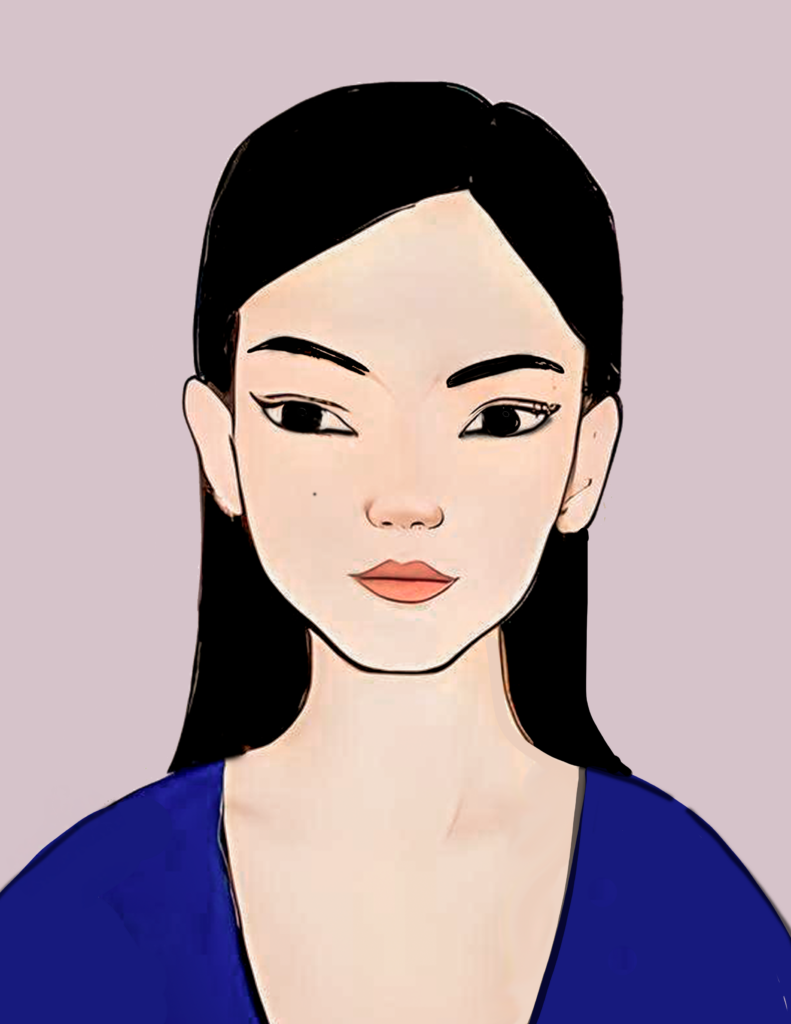
All of these features are unique to winter people. However, within this group, there are three subcategories to learn more about your season:
- Cool Winter also known as True Winter
- Bright Winter
- Dark Winter
Each of them has distinct characteristics that should assist you in determining which colors work best for you and how to build combinations that look amazing on you!
Don’t worry too much if some features of your appearance don’t match the following descriptions 100%. You may still fall into this season of colors even if there are a couple of characteristics that you don’t identify with.
Cool or True Winter
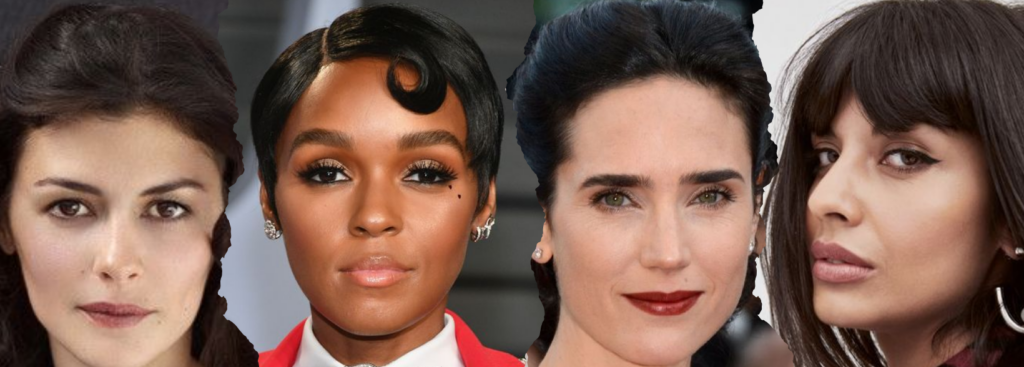
Cool Winter has the most vibrant color palette of the 4 seasons, it’s deep, icy, and bright. Cool winter is a winter scene in all its glory, everything is clear, crisp, and without any real warmth. This season’s natural colors are intense and high contrast, which is why winter people shine in black and jewel-like colors, such as deep scarlet, bright white, emerald green, or deep pink.
Characteristics of a Cool or True Winter
You are a True Winter if the primary color aspect of your appearance is cool, and the secondary aspect is bright. Your coloring is frosty and cold. There is no warmth in any of your features, and blue undertones dominate your skin, hair, and eyes, which have, in addition, a brilliant and clear appearance – there is no muddiness or softness in them. Overall, the contrast between your features is high.
eyes
True winter eyes are usually cool with blue undertones:
- Cool blue
- Icy hazel
- Cool brown
- Black
You may notice a border defining the iris and possible spokes on it.
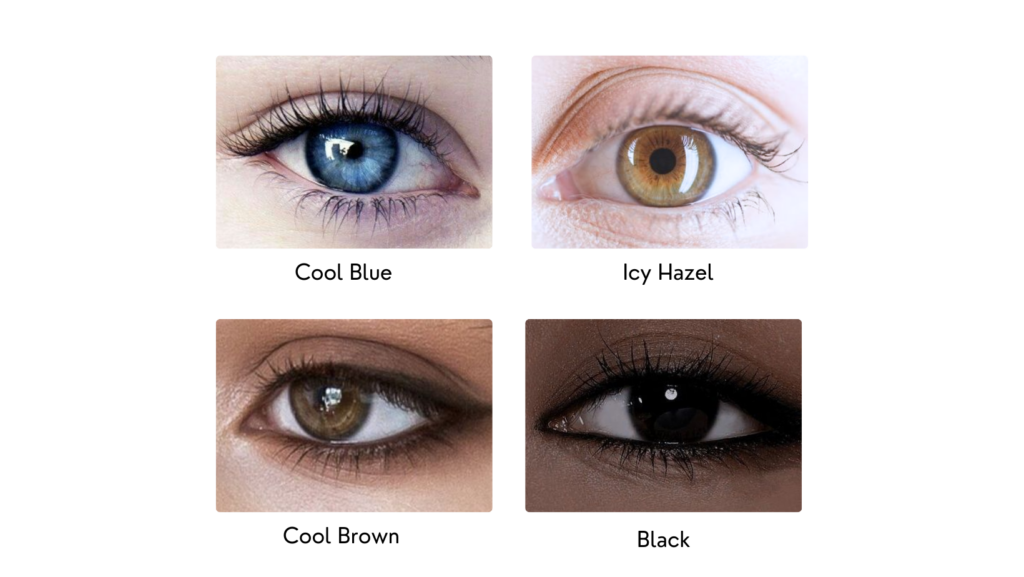
skin
True Winter skin has clear cool, blue undertones. This means that while silver makes the skin look healthy, gold makes it look off. You can use jewelry of these colors to make the comparison. Regardless of its color, you’ll notice how your skin always creates contrast with the eyes and teeth.
The most common skin shades for True Winters are:
- Very pale beige
- Pale beige
- Pale olive
- Rosy beige
- Sable
- Brown-black
Paler skin tones may not be warm, but it tans easily and freckles may also be present.

hair
The hair is typically dark. This color season’s hair does not have any natural highlights, and the hair is either neutral or ashy. The main tones are:
- dark ash brown
- dark brown
- cool brown-black
- black
- dark hair that has turned gray or white
These shades can be blackish blue but will never have red or gold tones.
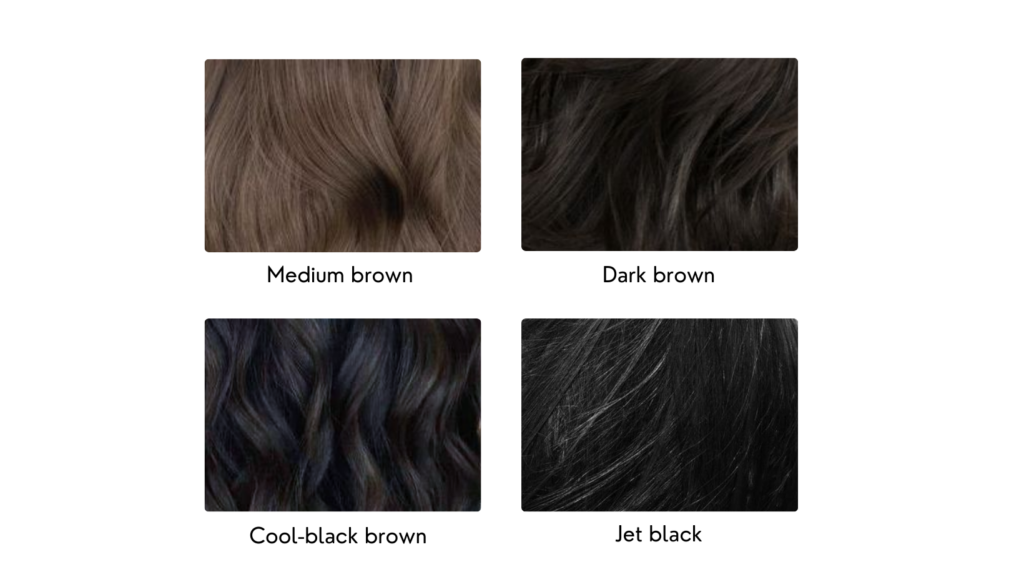
Color palette for Cool or True Winter
True Winter is the color season that resembles winter in its prime. White, snowy landscapes stand in stark contrast to bare trees and the darkest of nights. These colors contrast between light, dark, and bright. This season occurs at the coldest, iciest end of the Winter season. As a result, the colors are cool with a strong blue undertone.

True Winter has a wide range of colors, from icy pinks and purples to frosty blues. Despite the high color contrast, the dark tones are balanced with brighter and much lighter accent colors.
- The palette includes true black and white, as well as dark blues and browns that can be used as dark neutrals. Aside from true white, some light beiges and greys can be used as light neutrals.
- Warm, earthy colors like golden browns and rusty oranges will suit you less, because they are not intense enough and will clash with your naturally cool coloring.
- Soft, muted colors like dusty blues and lavender will wash you out. If you want to wear pastel colors, use the icy versions on your palette and combine them with dark neutrals.
Technically, you can combine any of the colors on the True Winter palette with each other. But certain combinations will look much better than others. Those are the combinations that repeat the contrast level that is naturally present in your appearance.
- True Winter looks great in all-dark or all-light monochromatic looks. Contrast is also a suitable option.
- Another thing to bear in mind is that even though your natural color contrast is high, it is not as extreme as a Bright Winter. So pairing colors that sit opposite each other on the color wheel, such as yellow and purple, can be overpowering. Instead, always opt for a neutral and an accent color.
The best colors for True Winter are:
- Icy or vibrant roses (carnation pink, hot pink, hot pink)
- Light reds
- Deep purple
- Blues
- Greens (jungle green, bottle green, and emerald)
- Bright white
- Black
These are just guidelines to get you started. You don’t want to restrict yourself too much if the colors below aren’t appealing, but instead, allow it to be a guide and play around with different shades in each category until you find what works best.

Bright Winter
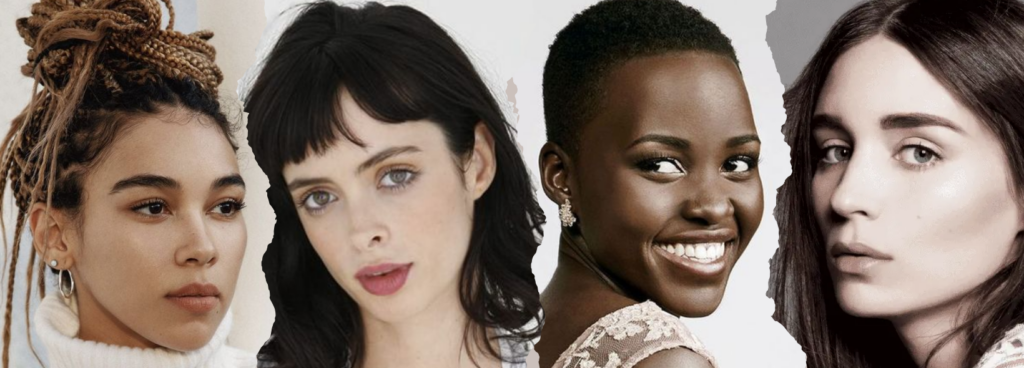
This season is bright and refreshing. This season, which lasts from winter to spring, gives the skin, hair, and eyes a neutral and fresh appearance. Bright Winter’s most noticeable feature, like Bright Spring’s, is the clear appearance of features. Its brilliance and vitality are unexpected and must not be overlooked.
Characteristics of a Bright Winter
If the primary color aspect of your overall look is bright and the secondary aspect is cold, you are a winter brighter, which means that cold colors suit you better than warmer ones.
Your hair, skin, and eyes have a striking contrast. Your features are saturated and bright, and there is no cloudiness, giving you a crisp and clear appearance. Your eyes are probably your most noticeable feature. They shine like jewels and often contrast with darker hair. Furthermore, because your skin tone has cooler undertones, silver flatters it more than gold.
eyes
Bright winter eyes are sparkly and electric. Bright Winters eyes can be:
- blue
- cyan
- aqua
- cool brown
- black
Typical of winter eyes, you may see a rim defining the iris and possible rays on the iris. There is also a high contrast between the iris and the white of the eye, making the eyes appear clear and bright.
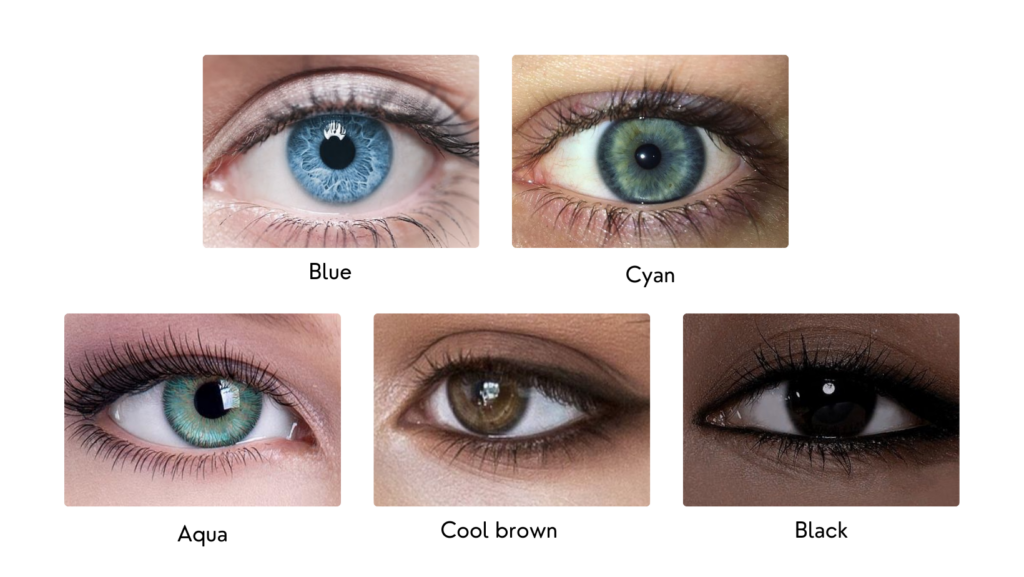
skin
Because the skin is neutral or cool neutral, both silver and gold look good in contrast, but silver looks better. The skin appears clear and often has a translucent quality to it. Darker skin has a gleaming, almost glassy radiance. Some Bright Winters have freckles as well.
Common skin colors:
- Porcelain white
- Pale beige
- Pink beige
- Pale olive
- Pale tan
- Rose brown
- Cacao
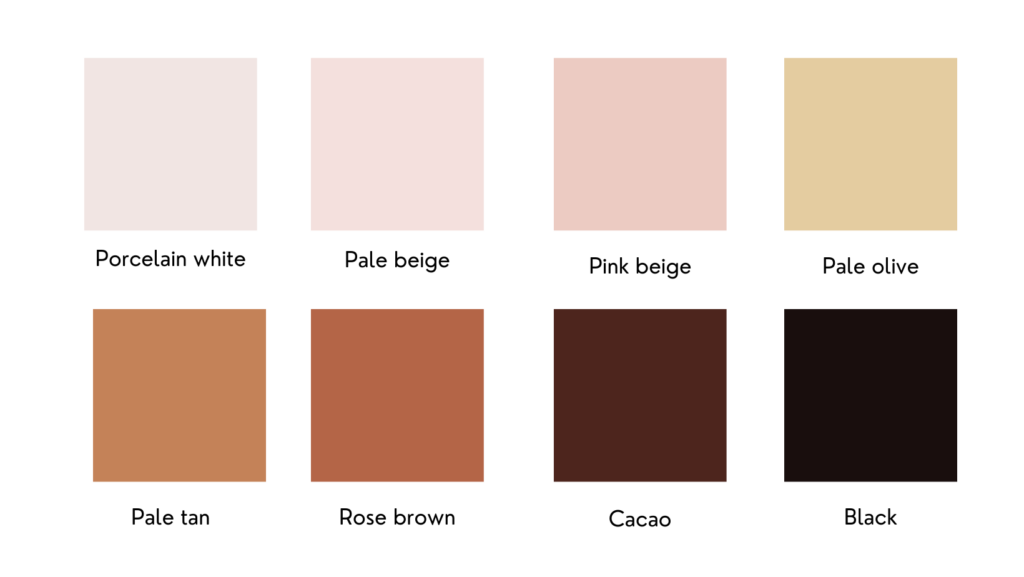
hair
The hair of this color season is quite dark. It can have blue or ash undertones or be neutral.
The main hair shades of this season are:
- medium brown
- dark brown
- brown-black
- black
- naturally occurring gray and white hair is also part of this season
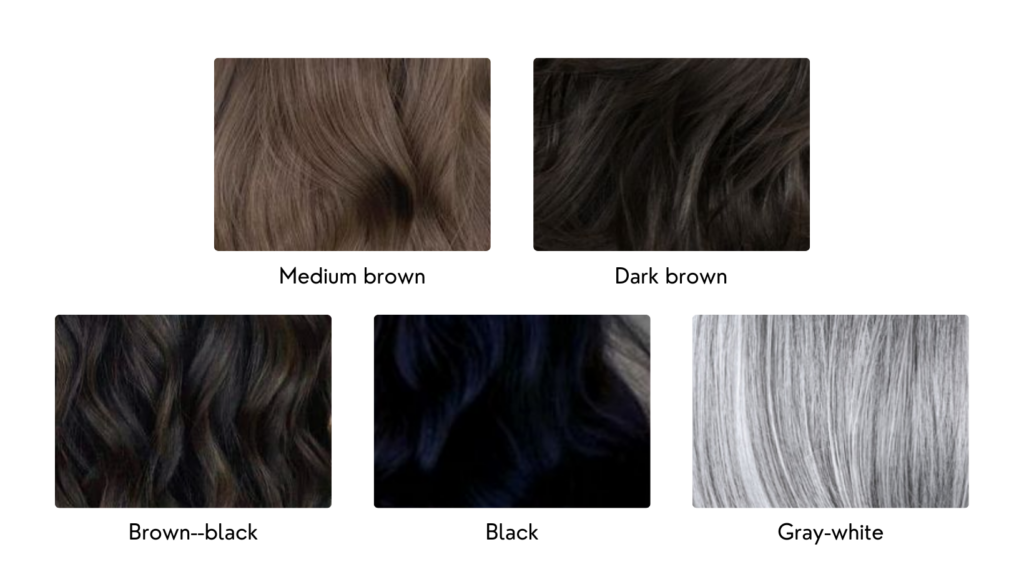
Color Palette for Bright Winter
Bright Winter is reminiscent of sunlight in cold winter landscapes, bright and sparkling. Here are the vibrant, almost unnatural colors of extreme weather situations, such as the Northern Lights in the night sky. Bright Winter combines brightness with freshness, the colors are extreme: extremely intense, light, dark and vibrant.
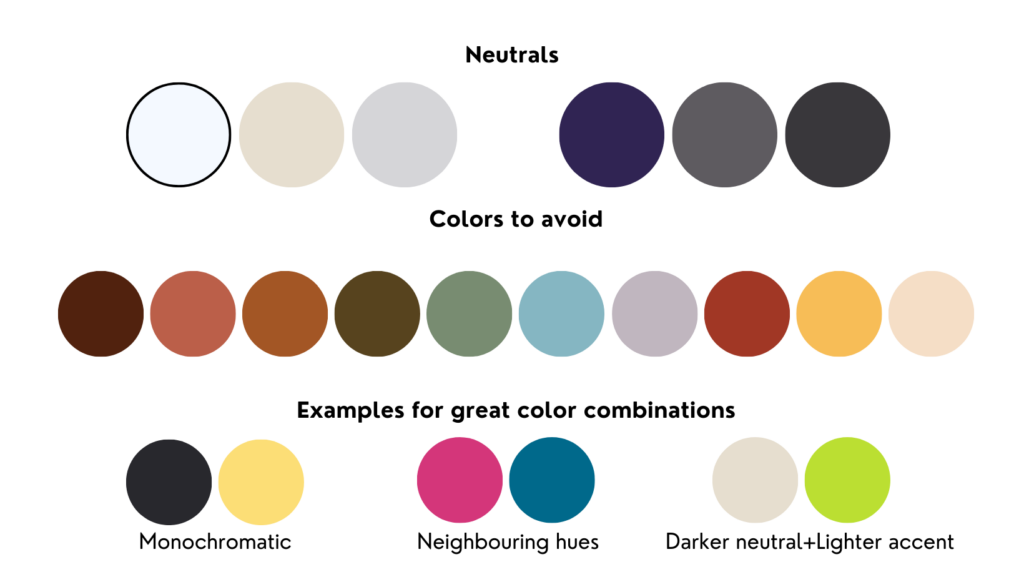
- The palette contains acid greens, neon yellows and bright fuchsias that would dominate any other season. Spring also warms the colors slightly, so they are not as icy as true winter colors.
- The Bright Winter palette contains black. Additionally, you have very dark charcoal grays in your palette, which you can also use as dark neutrals.
- True white is also part of the color palette, as are light grays and light beiges. However, black or white alone, or black and white, are not intense enough for coloring. You will need to add a brighter color to enhance your outfit.
- Rich, warm tones, like orange-browns and golden yellows, will clash with your naturally cooler look. Warm, dull colors are not the most flattering for you.
Technically, you can combine any of the colors in the Bright Winter palette with each other. But certain combinations will look much better than others. Those are the combinations that repeat the level of contrast that is naturally present in your appearance.
Don’t be afraid to combine different colors, especially those that are opposite each other on the color wheel, like hot pink and teal. The more unusual the combination, the more striking.
- Avoid monochromatic looks, low contrast color combinations and monochrome looks. All of these will seem very dull to you and will diminish your vibrant color.
Despite the darkness that’s part of your palettes, your season still has some of the liveliest colors, like acid green, neon yellows, and bright fuchsia.
- Red, orange, or pink — ruby, true red, cherry, fuchsia, strawberry, hot pink
- Yellow or green — lemon-lime, lemon, marigold, jungle, jade, teal
- Purple or blue — grape, purple, plum, cobalt, blue, cyan
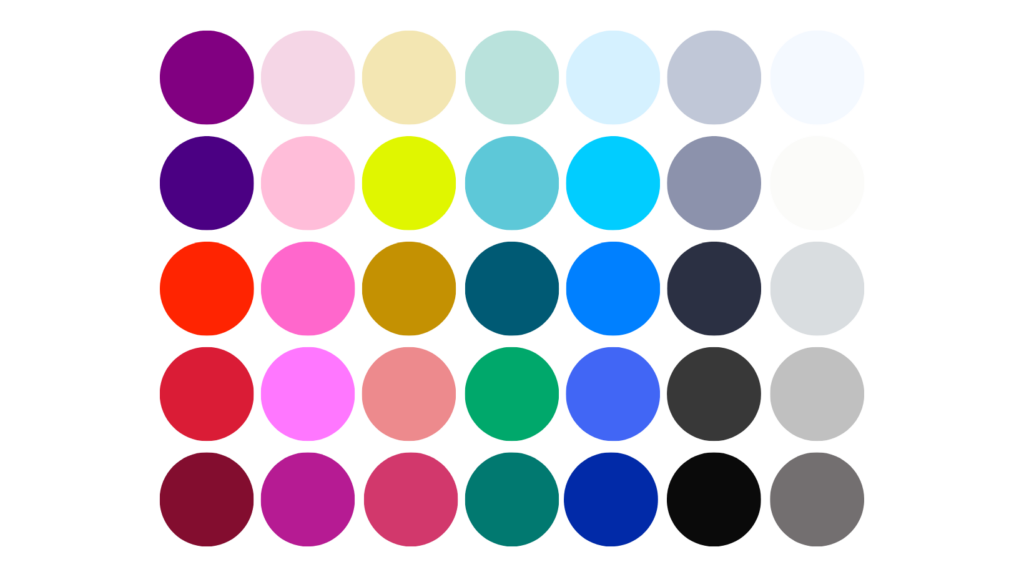
Dark Winter
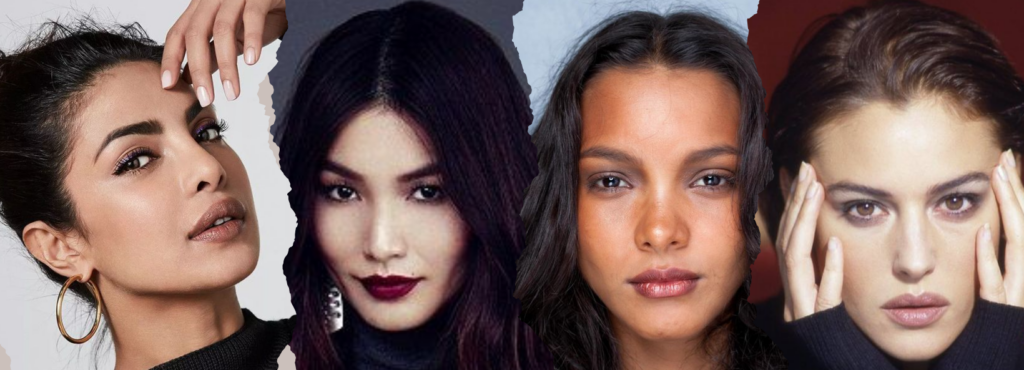
This is the Winter family’s darkest season. The Dark Winter color palette is like a walk through a misty forest, with a touch of icy frost. Winter landscapes, a deep ocean, and a mysterious but majestic winter sky take over. It’s sensual but majestic and luxurious, like discovering a mesmerizing twilight sky and a medieval castle alone in the frozen meadows.
Characteristics of a Dark Winter
Your primary appearance is dark, and your secondary appearance is cold? You’re most likely a Dark Winter.
Regardless of your skin tone, there is always a strong contrast between your features. This is because the whites of the eyes and teeth stand out against dark eyes and hair. Because your skin tone has cooler undertones, silver flatters you more than gold.
eyes
Dark Winter eyes are of course, dark:
- dark hazel
- dark olive
- dark brown
- black
You may notice a border defining the iris and spokes on the iris, which are characteristic of Winter eyes. But remember, if you have a light eye color, you don’t qualify to be a deep winter. It would be helpful to review other members of the season.
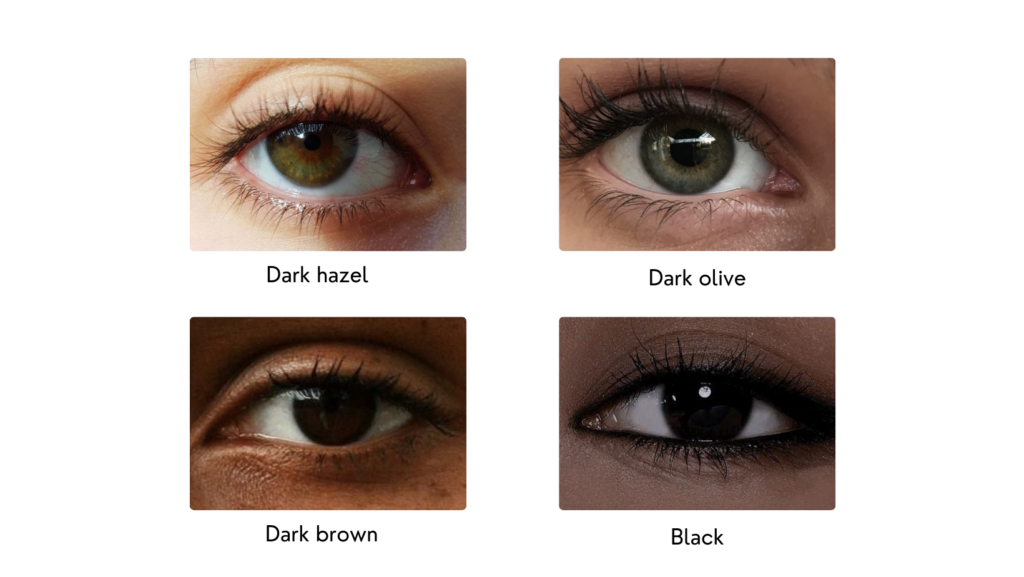
eyes
The skin is neutral or cool neutral, which means that both gold and silver look good in contrast, but silver looks better. Dark Winter skin has the largest range of skin colors, from light to deep.
- Alabaster
- Limestone
- Toasted
- Pink brown
- Dark brown
- Intense cocoa
The deep winter skin tone will not be as cool as the rest of your family due to its seasonal location. Because of the influence of autumn’s dark subseason, those with ashy skin tones can have a little warmth underneath.
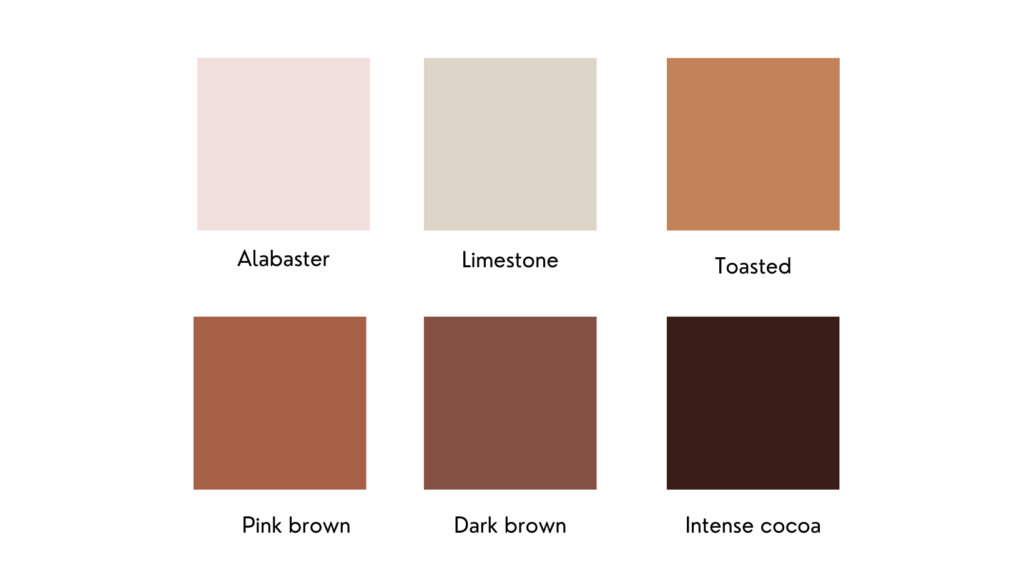
hair
The hair of this color season is dark:
- medium brown
- dark brown
- cool-black brown
- jet black
The color tends to be neutral or slightly ashy. It generally has no reflections and does not develop any when exposed to sunlight. There is also room for brunettes and medium-dark coppers.
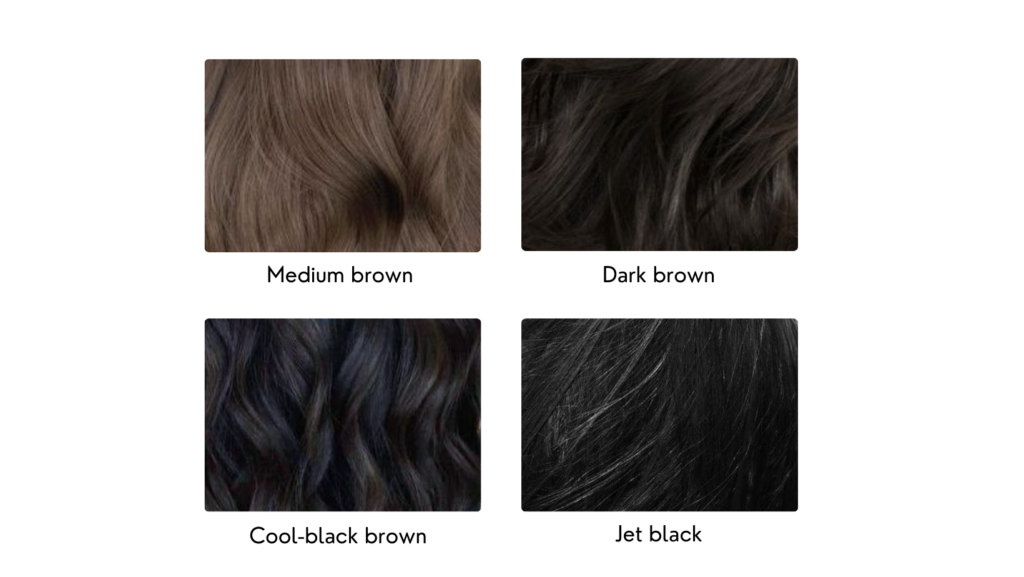
Color Palette for Dark Winter
These colors are dark and cold. Dark Winter combines depth with freshness often with hints of warmth, Dark Winter sits at the autumnal end of the Winter family. However, it needs the icy influence of winter rather than the rich, earthy tones of fall.
Colors in the palette are highly saturated, contrasted, and relatively bright. Although the palette is quite broad, it contains a lot of pinks, reds, purples, and blues.
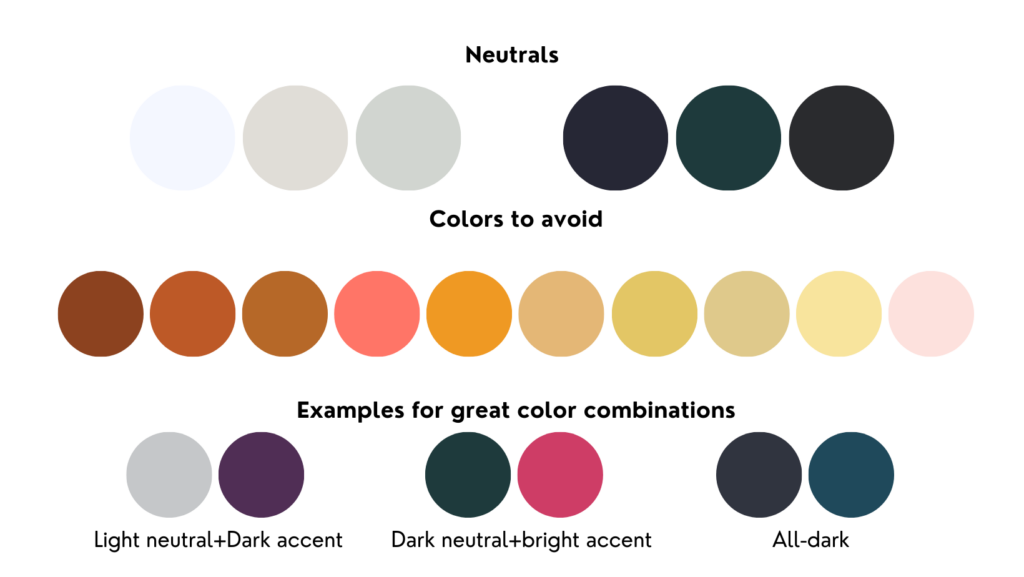
- Because black is a part of the winter palette, it can be used as a dark neutral. You can even achieve an all-black look if you have light skin with a high contrast to your hair and eyes. If you have darker skin, you may notice that wearing all black makes you appear smaller. Use black sparingly in that case. Dark blues and greens can also be used as dark neutrals.
- The Dark Winter palette also includes true white. However, for maximum contrast, always pair it with a darker color. In addition to light beiges and grays, you have light neutrals in your palette.
- Very warm earth colors, such as golden oranges and browns, will make you look unhealthy.
- Warmer pastel colors can also make you look out of place, so stick with the light, icy colors in your palette.
Technically, you can combine any of the colors in the Dark Winter palette with each other. But certain combinations will look much better than others. Those are the combinations that repeat the level of contrast naturally present in your appearance.
Combining colors that are opposite each other on the color wheel, such as yellow and purple, can seem overwhelming. Instead, always pair a neutral color with an accent color. Monochromatic and neutral combinations will also seem boring to you.
The best dark winter colors are:
- Red, orange or pink: wine, brick red, ruby, blackberry, fuchsia, magenta
- Yellow or green: mustard, honey, canary, caramel, marigold, sand, beige, ocean, dark green, forest, jungle green.
- Purple or blue: royal purple, mulberry, purple, royal blue, Aegean, cerulean
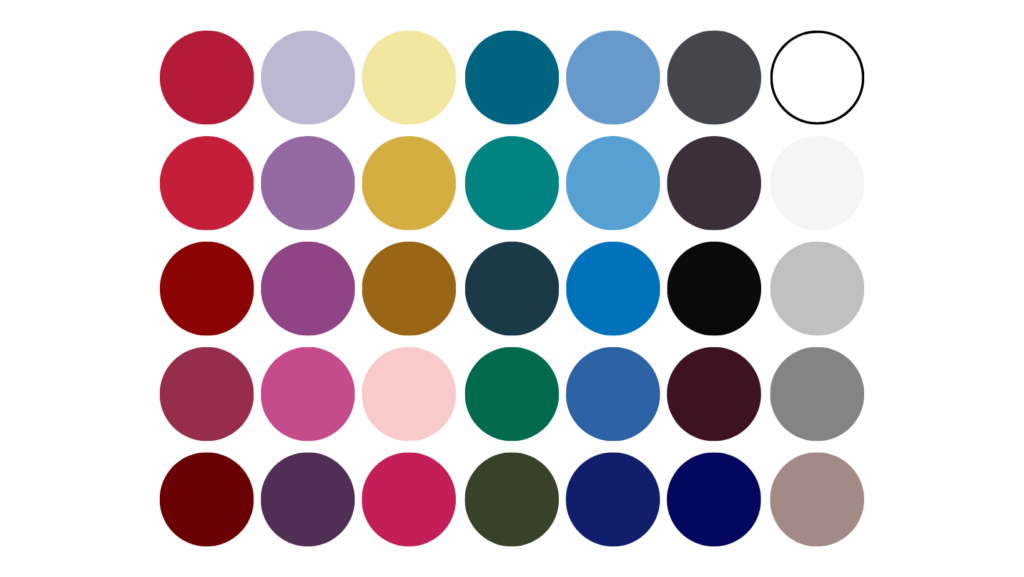
Finally, a couple of extra tips:
Use your colors as a guide, not a rule
You shouldn’t rely on your colors as an infallible rule for every color that suits you. So why not?
Since the 12 seasonal subtypes are neither exclusive nor exhaustive. That means you might not fit perfectly into a single type or color palette. It would be a shame to ignore all the other colors if your characteristics match one of the types.
Other palettes, particularly those in your season, offer a wide variety of other shades to experiment with that will also suit you. Using the other palettes can assist you in creating more diverse but still cohesive color schemes for your needs. Start with your recommended color palette and work your way up to experimenting with different color tones and shades.
Prioritize colors close to your face
Color analysis seeks to find colors that complement your skin tone, hair color, and eye color—in other words, your face. Colors that are not close to your face can influence your overall appearance but not necessarily your complexion.
Try wearing different colored clothes close to your face. If you have a favorite color that isn’t in your palette, go ahead and use it; however, try to use it for details or in a lower part of your outfit, away from your face.
Your personal preferences always win over color analysis
Your color palette should never limit your ability to express yourself.
If the suggested colors do not match your style concept, simply examine each shade individually to see if you can pull it off. Using the process of elimination, you can begin to create a color palette that is uniquely yours. If a particular shade makes you look sickly, look for a substitute that captures the essence of the color but matches your skin tone better.
i hope this helps you better understand those colors that go perfectly with you, so you can create perfect looks for yourself.
If you are not sure which station is yours, you can consult what is my seasonal color palette – the only quiz you need or request our personalized advisory services
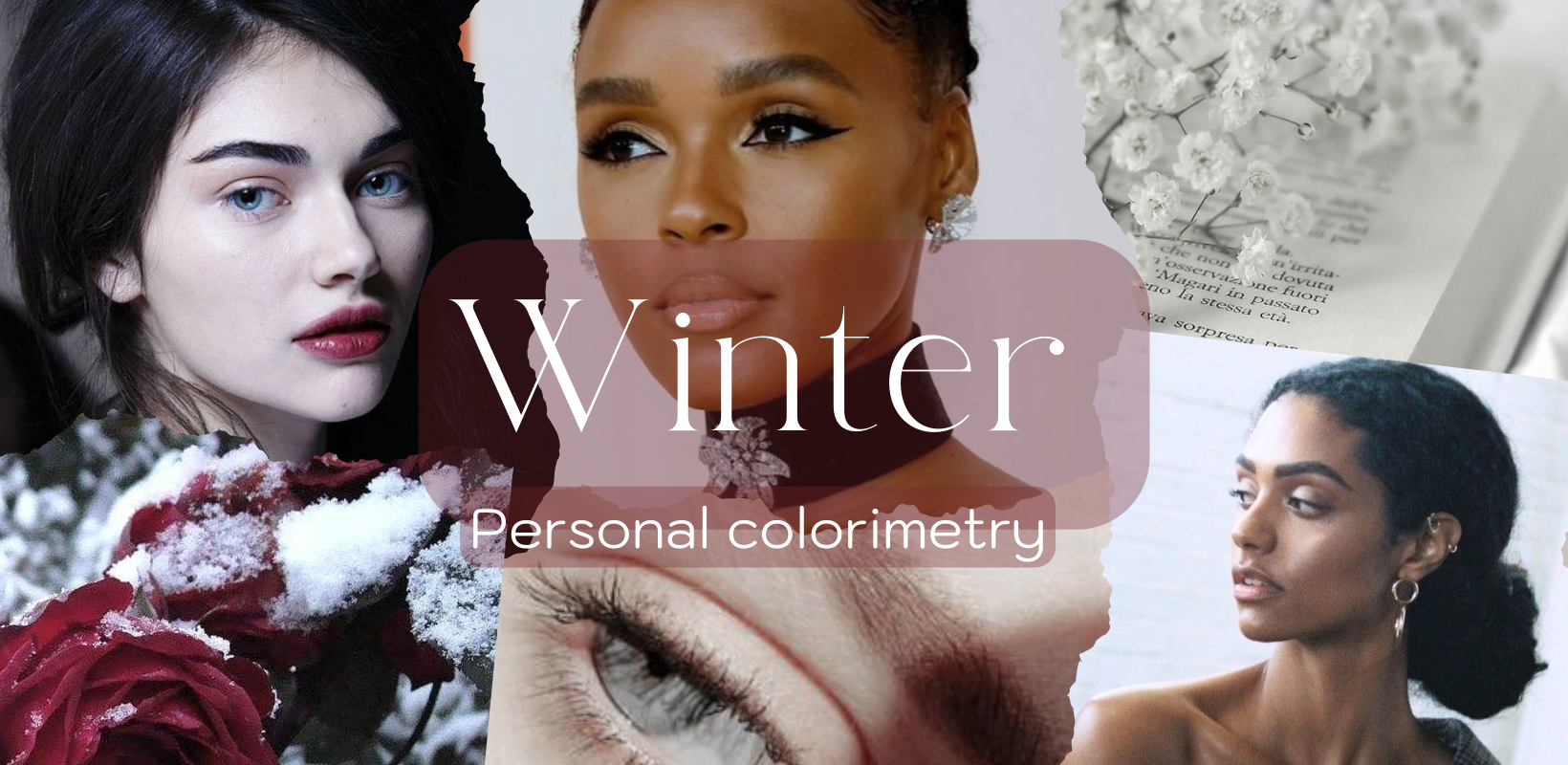


Leave a Reply